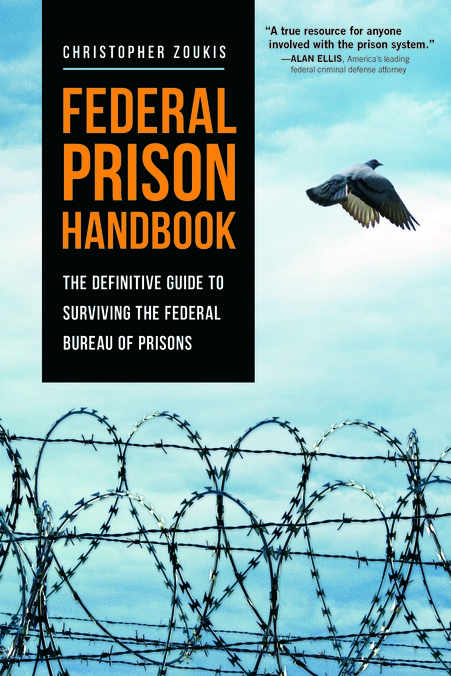SCOTUS Clarifies It Had Already Been ‘Clearly Established Federal Law’ in 2004 for Purposes of AEDPA That Evidence at Trial Can Be So Prejudicial as to Violate Due Process
by Sam Rutherford
The Supreme Court of the United States clarified that it had already been clearly established federal law for purposes of the Antiterrorism and Effective Death Penalty Act of 1996 (“AEDPA”) at the time of a federal habeas petitioner’s state trial in 2004 that admitted evidence at trial can be so “unduly prejudicial” that it renders the trial fundamentally unfair under the Due Process Clause of the Fourteenth Amendment, and thus, the Court held that the U.S. Court of Appeals for the Tenth Circuit erred in holding that the foregoing was not clearly established federal law at the time of petitioner’s trial.
In 2004, Brenda Andrew stood trial in Oklahoma for murdering her husband to obtain the proceeds from his life insurance. Andrew was accused of conspiring with her paramour, James Pavatt. A jury found her guilty and sentence her to death.
The prosecutor repeatedly introduced evidence during both the guilt and penalty-phase trials regarding Andrew’s 20-year history of sexual promiscuity and her penchant for wearing provocative clothing. The prosecutor also elicited testimony from witnesses about Andrew’s shortcomings as a mother and the fact that she had not been faithful to her husband. The prosecution contrasted this evidence with her husband’s lifestyle and character, which the prosecutor described as having been “committed to God.”
Andrew appealed her conviction and sentence, arguing that the admission of the foregoing evidence was irrelevant, inadmissible, and so unfairly prejudicial that it violated not only the Oklahoma rules of evidence but also the Due Process Clause of the U.S. Constitution. The Oklahoma Court of Criminal Appeals (“OCCA”) held that evidence concerning Andrew’s extramarital affairs was admissible to show that “[h]er co-defendant was just the last in a long line of men that she seduced.” As for the remaining evidence related to Andrew’s character and lifestyle, the prosecution conceded that it was irrelevant and inadmissible but argued that the error was harmless. The court agreed.
Andrew then filed a petition for writ of habeas corpus in the U.S. District Court for the Western District of Oklahoma, claiming that the admission of the evidence in question violated her due process rights. The District Court denied relief, and a divided panel of the U.S. Court of Appeals for the Tenth Circuit affirmed, holding that Andrew failed to cite “clearly established federal law governing her claim.” The U.S. Supreme Court granted Andrew’s petition for writ of certiorari and summarily reversed without oral argument.
The Court began its analysis by noting that a state prisoner may obtain federal habeas relief based on claims adjudicated on the merits in state court only where the state court unreasonably determined the facts or unreasonably applied “clearly established Federal law, as determined by the Supreme Court.” 28 U. S. C. §§ 2254(d)(1)-(2). Clearly established federal law means “the holdings, as opposed to the dicta,” of the Supreme Court’s decisions. White v. Woodall, 572 U.S. 415 (2014). When the Supreme Court “relies on a legal rule or principle to decide a case, that principle is a ‘holding’ of the Court” for purposes of AEDPA, the Court explained. Lockyer v. Andrade, 538 U.S. 63 (2003).
Applying these principles to the present case, the Court concluded that “Andrew properly identified clearly established federal law.” The Court of Appeal’s determination to the contrary was based on a misunderstanding of the holding in Payne v. Tennessee, 501 U. S. 808 (1991), the Court stated.
The Payne Court “considered whether to overrule a set of prior cases that had categorically barred the introduction of victim impact evidence during the sentencing phases of a capital trial.” It concluded that a categorical bar was not required to protect against the risk of unduly prejudicial testimony that would render the trial fundamentally unfair being admitted because the “Due Process Clause of the Fourteenth Amendment provides a mechanism for relief” against the introduction of such evidence. Citing Darden v. Wainwright, 477 U.S. 168 (1986).
The Court explained that Payne “removed one protection for capital defendants (the per se bar on victim impact statements) in part because another protection (the Due Process Clause) remained available against evidence that is so unduly prejudicial that it renders the trial fundamentally unfair.”
The Court further explained: “The legal principle on which Andrew relies, that the Due Process Clause can in certain cases protect against the introduction of unduly prejudicial evidence at a criminal trial, was therefore indispensable to the decision in Payne. That means it was a holding of this Court for purposes of AEDPA.”
In contrast, the Court of Appeals believed that Payne “merely established that the Eighth Amendment did not erect a ‘per se bar’ to the introduction of victim-impact statements in capital cases.” The Court of Appeals concluded that Payne did not recognize a due process limitation on the admission of irrelevant evidence in general, but only as it relates to victim impact testimony, and therefore did not qualify as clearly established federal law.
But as the Court detailed, that was a misreading of Payne, adding that to the extent the Court of Appeals believed that it was constrained by AEDPA to limit Payne to its fact, “it was mistaken.” Thus, the Court ruled that the Court of Appeals “erred by refusing even to consider whether the OCCA unreasonably applied established due process principles to Andrew’s case.”
The Court stated that general legal principles “can constitute clearly established law for purposes of AEDPA so long as they are holdings of this Court.” It noted that although Payne has never been used to invalidate a conviction for improperly admitted prejudicial evidence, “certain principles are fundamental enough that when new factual permutations arise, the necessity to apply the earlier rule will be beyond doubt.” Quoting Yarborough v. Alvarado, 541 U.S. 652 (2004); see also Taylor v. Riojas, 592 U.S. 7 (2020) (per curiam) (“a general constitutional rule already identified in the decisional law may apply with obvious clarity to the specific conduct in question”).
The Court vacated the Court of Appeals’ opinion and remanded the case for it to determine in the first instance “whether a fair-minded jurist reviewing this record could disagree with Andrew that the trial court’s mistaken admission of irrelevant evidence was so ‘unduly prejudicial’ as to render her trial ‘fundamentally unfair.’” Quoting Payne. The Court of Appeals was further instructed to “ask that question separately for the guilt and sentencing phases” and to “consider the relevance of the disputed evidence to the charges or sentencing factors, the degree of prejudice Andrew suffered from its introduction, and whether the trial court provided any mitigating instructions.” Citing Romano v. Oklahoma, 512 U.S. 1 (1994).
Accordingly, the Court vacated the judgment below and remanded the case for further proceedings consistent with its opinion. See: Andrew v. White, 220 L. Ed. 2d 340 (2025) (per curiam).
Editor’s note: This is a fascinating opinion, not because it breaks new legal ground but due to the fact it highlights the reality that the holding in court opinions is often in the eye of the beholder, i.e., subjective. It sparked deep disagreement between the Tenth Circuit and SCOTUS regarding what Payne held. The majority opinion of the Tenth Circuit concluded that Payne did not constitute “clearly established federal law” with respect to Andrew’s claim. That view of Payne’s holding was rejected in SCOTUS’ majority opinion. However, in Justice Thomas’ dissent, joined by Justice Gorsuch, he sided with the Tenth Circuit’s interpretation of Payne, arguing that it was the majority of the Court that deviated “from settled law,” not the Tenth Circuit.
Anyone with an interest in the difficulty of identifying court holdings in general is strongly encouraged to read the Court’s full opinion, Justice Thomas’ dissent, and the From the Editor article immediately below.
As a digital subscriber to Criminal Legal News, you can access full text and downloads for this and other premium content.
Already a subscriber? Login





